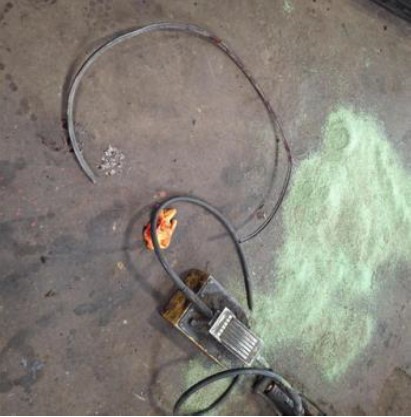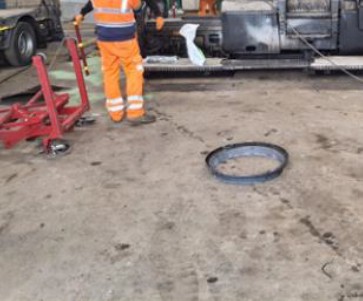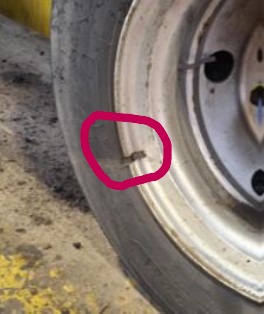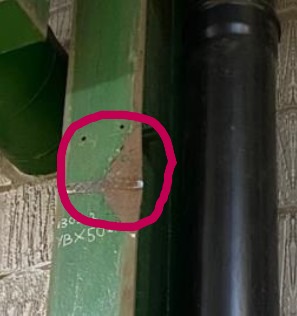During servicing of a contracting paver, one of the drive wheel tyres needed replacing. The old tyre had been removed and replaced with a brand new tyre by an experienced tyre fitter. During inflation the wheel failed and exploded, with wheel parts fired across the servicing provider’s workshop.


The first image above shows the bloodied locking rim and floor, the second the outer rim
One of these parts caused significant injury to the hand of the tyre fitter. His hand needed two operations to pin and reconstruct it. Fortunately, no harm was caused to others working in or around the workshop at the time of this incident. Damage was caused to equipment used to change the tyre, to the wheel of a low loader trailer parked in the workshop, to an oil drum and to a steel girder and the roof of the workshop.


The images above show the damage caused by the flying wheel parts.
Considering the impact damage caused, the harm and injury suffered could have been so much worse if this incident had occurred under slightly different circumstances.
Paver tyres do not need changing that frequently, but this incident highlights the hazard and severity of risk that is present in this type of task! Unlike car wheels which are mostly single piece, wheels on construction plant are typically multi-piece. This introduces the potential for differences in assembly, potential for more variance in methods to change tyres and differences in what could happen when things go wrong!
An investigation established the following
- A trained/experienced tyre fitter from a specialist tyre company was used here, but that alone did not prevent this incident.
- There were notable differences between the RAMS provided by the tyre company and how the tyre fitter actually completed the task. For example, workshop CCTV footage catpured the tyre fitter repeatedly hitting the assembled wheel rim with a hammer/mallet during inflation. This step was not mentioned anywhere in the RAMS for this task.
- In this incident, no tyre restraint cage or similar device was used here to control any failure. The tyre company standard was to use these only when available.